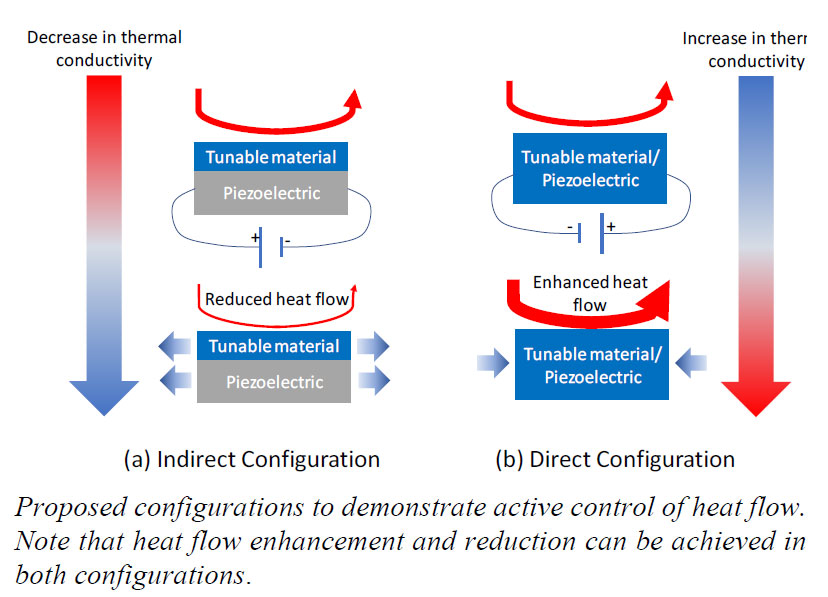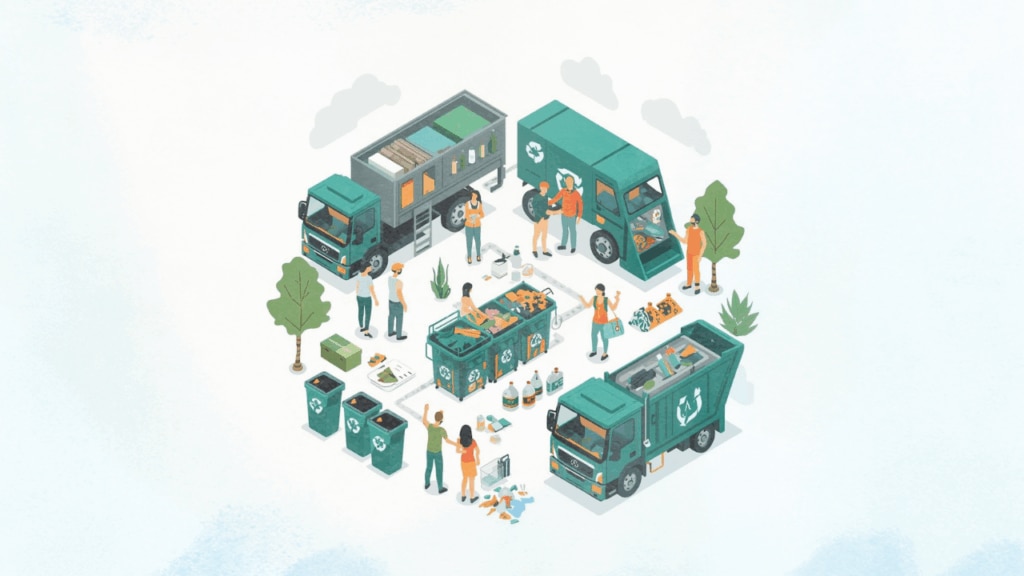New electrochemical system enables efficient metal recovery from industrial wastewater | Newswise – Newswise

Report on an Advanced Electrochemical System for Sustainable Metal Recovery
Introduction: Addressing Industrial Pollution and Advancing Sustainable Development Goals
A research team at Tsinghua University has developed a novel electrochemical system that significantly enhances the recovery of metals from industrial wastewater. This innovation directly addresses several United Nations Sustainable Development Goals (SDGs) by mitigating environmental hazards and promoting a circular economy.
- SDG 6 (Clean Water and Sanitation): The technology offers a new method for treating industrial wastewater, reducing heavy metal pollution and contributing to safer water resources.
- SDG 9 (Industry, Innovation, and Infrastructure): This research represents a key innovation in industrial processes, fostering sustainable infrastructure and resilient industrialization.
- SDG 12 (Responsible Consumption and Production): By enabling the efficient recovery and recycling of valuable metals, the system promotes sustainable production patterns and reduces waste.
- SDG 14 (Life Below Water): Preventing the discharge of heavy metal contaminants into water systems protects marine and aquatic ecosystems from pollution.
Technological Innovation: Overcoming Existing Limitations
Conventional metal recovery methods, such as electrodeposition, are often hindered by limitations in interfacial ion transport, leading to inefficient and low-quality results. The new system, developed under the leadership of Professor Huijuan Liu, integrates a transient electric field (TE) with a swirling flow (SF) to overcome these challenges.
- Enhanced Mass Transfer: The combination of TE and SF simultaneously improves bulk and interfacial ion transport.
- Improved Reaction Kinetics: The synergy between the electric field and turbulent flow accelerates the deposition process, leading to rapid and high-quality metal recovery.
- Homogeneous Deposits: The method produces recovered metals with uniform morphologies and compositions.
Methodology and Key Findings
The research team conducted extensive testing to determine the most effective operational parameters for the TE&SF mode. The findings demonstrate a substantial improvement in efficiency compared to existing techniques.
- Optimal Conditions: The highest efficiency for sequential copper recovery was achieved with low and high electric levels of 0 and 4 V, a 50% duty cycle, a 1 kHz frequency, and a 400 L/h flow rate.
- Kinetic Efficiency: The kinetic coefficients of the combined TE&SF electrodeposition were found to be 3.5−4.3 times greater than single TE electrodeposition and 1.37−1.97 times greater than single SF electrodeposition.
- Simulation Confirmation: Process simulations confirmed that the concurrent application of TE and SF conditions facilitates efficient interfacial ion transport and charge transfer.
Direct Contributions to Sustainable Development Goals
The application of this technology has profound implications for achieving global sustainability targets.
- Contribution to SDG 6 and SDG 14: The system provides an effective tool for industries to manage their effluent, significantly reducing the pollution load on freshwater bodies and marine environments.
- Contribution to SDG 12: This approach embodies the principles of a circular economy. It transforms hazardous industrial waste into a valuable resource, promoting responsible resource management and minimizing the need for virgin material extraction.
- Contribution to SDG 9: The development showcases a leap in sustainable engineering, offering industries a pathway to upgrade their processes for greater environmental and economic efficiency.
Broader Applicability and Conclusion
The system demonstrates wide applicability for recovering various metals with redox potentials higher than those of hydrogen evolution and water reduction. This capability makes it a valuable asset for the high-value recovery of precious and heavy metals across numerous industries.
In conclusion, the research provides a critical advancement in electrochemical engineering. By creating a process that is both rapid and efficient, this technology offers a viable solution for reducing industrial pollution and preserving valuable natural resources, aligning technological progress with the core objectives of the Sustainable Development Goals.
Reference
Chen, L., Zhang, G., Liu, H., Miao, S., Chen, Q., Lan, H., & Qu, J. (2024). Efficient Metal Recovery from Industrial Wastewater: Potential Oscillation and Turbulence Mode for Electrochemical System. Engineering. https://doi.org/10.1016/j.eng.2023.12.002
Analysis of SDGs, Targets, and Indicators
1. Which SDGs are addressed or connected to the issues highlighted in the article?
-
SDG 6: Clean Water and Sanitation
The article directly addresses this goal by introducing a new technology to treat industrial wastewater, which is a major source of water pollution. The research aims to tackle “significant environmental hazards due to heavy metal pollution” in water, thus contributing to cleaner water resources.
-
SDG 9: Industry, Innovation, and Infrastructure
This goal is central to the article, which highlights a scientific and technological innovation (“a new electrochemical system”) developed by a university research team. The technology is designed to be integrated into industrial processes to make them more sustainable and efficient, aligning with the goal of upgrading industries and fostering innovation.
-
SDG 12: Responsible Consumption and Production
The article’s focus on “metal recovery” and “resource recycling” directly relates to this SDG. By recovering valuable metals from wastewater, the technology promotes a circular economy model, reduces waste, and ensures the efficient use of natural resources, which are key principles of responsible production patterns.
2. What specific targets under those SDGs can be identified based on the article’s content?
-
SDG 6: Clean Water and Sanitation
- Target 6.3: By 2030, improve water quality by reducing pollution, eliminating dumping and minimizing release of hazardous chemicals and materials. The article’s technology is designed to remove heavy metals (“hazardous chemicals”) from industrial wastewater, directly contributing to reducing water pollution from industrial sources.
-
SDG 9: Industry, Innovation, and Infrastructure
- Target 9.4: By 2030, upgrade infrastructure and retrofit industries to make them sustainable, with increased resource-use efficiency and greater adoption of clean and environmentally sound technologies. The new electrochemical system is described as an “environmentally friendly and resource-efficient” technology that improves on current methods, directly supporting the retrofitting of industries for sustainability.
- Target 9.5: Enhance scientific research, upgrade the technological capabilities of industrial sectors… encouraging innovation. The article is a report on research conducted at Tsinghua University that has resulted in an innovative new system, exemplifying the enhancement of scientific research and technological capabilities.
-
SDG 12: Responsible Consumption and Production
- Target 12.4: By 2030, achieve the environmentally sound management of chemicals and all wastes throughout their life cycle… and significantly reduce their release to water. The technology provides a method for the “environmentally sound management” of heavy metal waste in industrial wastewater, preventing its release into the environment.
- Target 12.5: By 2030, substantially reduce waste generation through prevention, reduction, recycling and reuse. The system’s primary function is “metal recovery from industrial wastewater,” which is a form of recycling. It turns a waste product into a valuable resource, thereby reducing the overall waste generated by industrial processes.
3. Are there any indicators mentioned or implied in the article that can be used to measure progress towards the identified targets?
-
For Target 6.3 & 12.4 (Reducing water pollution and managing waste):
- Implied Indicator: Efficiency of heavy metal removal from wastewater. The article states the technology leads to “effective metal pollution reduction,” which implies a measurable decrease in the concentration of heavy metals in the treated water.
-
For Target 9.4 (Adoption of clean technologies):
- Mentioned Indicator: Kinetic efficiency and processing speed. The article provides specific quantitative data that serves as an indicator of the technology’s improved performance: “The kinetic coefficients of TE&SF electrodeposition were found to be 3.5−4.3 times and 1.37−1.97 times that of single TE and SF electrodeposition, respectively.” A flow rate of “400 L/h” is also mentioned as an optimal condition for efficient recovery.
-
For Target 12.5 (Reducing waste through recycling):
- Mentioned Indicator: Quality and rate of recovered materials. The article points to “rapid and efficient sequential recovery of copper” and the ability to achieve “high-value recovery of precious and heavy metals.” It also notes that the recovered deposits have “homogeneous compositions and uniform morphologies,” which is a qualitative indicator of successful recycling.
4. Summary Table of SDGs, Targets, and Indicators
| SDGs | Targets | Indicators |
|---|---|---|
| SDG 6: Clean Water and Sanitation | 6.3: Improve water quality by reducing pollution and minimizing the release of hazardous chemicals. | Efficiency of heavy metal removal from industrial wastewater (implied by “effective metal pollution reduction”). |
| SDG 9: Industry, Innovation, and Infrastructure | 9.4: Upgrade industries with increased resource-use efficiency and adoption of clean technologies. | Increased kinetic coefficients (3.5-4.3 times higher) and optimal flow rate (400 L/h) of the new system compared to conventional methods. |
| 9.5: Enhance scientific research and encourage innovation. | Development of a novel electrochemical system by a university research team. | |
| SDG 12: Responsible Consumption and Production | 12.4: Achieve environmentally sound management of chemicals and wastes to reduce their release to water. | The system’s capability to manage and recover heavy metals, preventing their release. |
| 12.5: Substantially reduce waste generation through recycling. | Rate and quality of metal recovery (“rapid and efficient sequential recovery of copper”; deposits with “homogeneous compositions”). |
Source: newswise.com

What is Your Reaction?
 Like
0
Like
0
 Dislike
0
Dislike
0
 Love
0
Love
0
 Funny
0
Funny
0
 Angry
0
Angry
0
 Sad
0
Sad
0
 Wow
0
Wow
0














































































